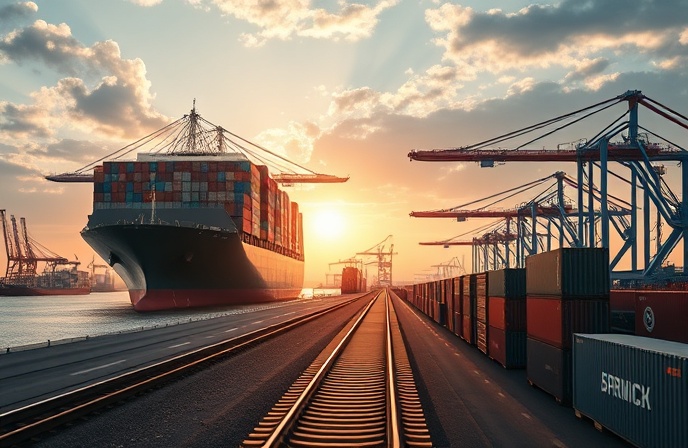India Rail’s $19B Budget: Modernization & Growth

Introduction
This article delves into the significant investment allocated to Indian Railways (IR) under the Union Budget 2022, analyzing the strategic initiatives aimed at modernizing infrastructure, boosting economic growth, and enhancing operational efficiency. The allocation of nearly $18.97 billion (Rs 1.4 trillion) represents a substantial commitment to addressing the challenges posed by the COVID-19 pandemic and accelerating India’s economic recovery. This investment will fuel key projects focused on technological advancements, sustainable practices, improved logistics, and enhanced passenger and freight transport. We will examine the key components of this ambitious plan, including the expansion of high-speed rail networks, the adoption of indigenous safety technologies, the promotion of local businesses, and the integration of multimodal transport systems. The analysis will also consider the long-term implications of these investments for the Indian economy and the role of IR in facilitating sustainable and inclusive growth.
Technological Advancement and Safety Enhancements
A cornerstone of the Union Budget 2022 allocation is the commitment to technological advancements within the Indian Railways. A significant portion of the funding is earmarked for the deployment of Kavach (an indigenous Automatic Train Protection (ATP) system) across approximately 2,000 kilometers of the network. Kavach enhances safety and operational efficiency by preventing collisions and derailments through advanced signaling and train control technologies. This initiative is aligned with the Atmanirbhar Bharat (Self-Reliant India) initiative, promoting the use of domestically developed technologies and reducing reliance on foreign suppliers. Furthermore, the plan to introduce 400 new Vande Bharat trains (semi-high-speed trains) over the next three years signifies a considerable investment in enhancing passenger comfort and reducing travel times. This expansion directly contributes to the improvement of passenger services and the overall competitiveness of rail transport.
Logistics Optimization and Economic Growth
The budget emphasizes improving logistics and supporting small businesses. The “One Station-One Product” initiative aims to promote local businesses by showcasing and distributing unique products from the region served by each railway station. This initiative directly benefits local producers and supports the development of regional economies. The integration of postal and railway networks for parcel movement will streamline logistics and enhance the efficiency of the supply chain. The construction of 100 Gati Shakti Cargo terminals (multimodal logistics centers) further underscores the commitment to optimizing logistics, improving connectivity between different modes of transport (rail, road, etc.), and reducing transportation costs. These measures are crucial for facilitating trade, boosting economic activity, and fostering inclusive growth.
Sustainable Practices and Infrastructure Development
The IR’s commitment to environmental sustainability is evident through the focus on hybrid locomotives. The transition to hybrid technology will significantly reduce the carbon footprint of railway operations and contribute to India’s broader climate change mitigation goals. The planned standardization and re-orientation of metro system designs will ensure cost-effectiveness and efficient resource utilization. The budget also allocates resources to improving multimodal connectivity between urban transport systems and railway stations, seamlessly integrating different transport modes to optimize passenger journeys and reduce congestion.
Financial Strategies and Future Outlook
The Indian government’s focus on exploring new financing mechanisms and accelerating the implementation of metro projects demonstrates a proactive approach to infrastructure development. The timely commissioning of the Eastern and Western Dedicated Freight Corridors (DFCs) aims to minimize logistics costs in the freight sector and enhance the competitiveness of Indian industries. This project will improve the efficiency of freight transportation, reducing transit times and enabling faster delivery of goods. The substantial investment in these projects signals a long-term commitment to upgrading the nation’s rail infrastructure. This strategic approach, focusing on technology, sustainability, and economic growth, positions Indian Railways for significant advancements in the coming years. The overall impact will be improved efficiency, enhanced safety, increased connectivity, and a more robust contribution to the national economy. The initiatives outlined in Union Budget 2022 represent a substantial step towards a modernized, efficient, and sustainable railway system for India.
Conclusions
The Indian Railways’ substantial budget allocation of $18.97 billion under Union Budget 2022 marks a pivotal moment in the modernization and expansion of India’s rail network. The strategic initiatives outlined in the budget address several key areas crucial for the nation’s economic growth and sustainable development. Technological advancements, spearheaded by the deployment of Kavach and the introduction of new Vande Bharat trains, signify a commitment to enhancing safety and passenger experience. The focus on optimizing logistics through initiatives like the “One Station-One Product” program and the construction of Gati Shakti Cargo terminals will significantly boost economic activity, particularly for small businesses and regional economies. The emphasis on sustainable practices, such as the adoption of hybrid locomotives, demonstrates a commitment to environmental responsibility. Furthermore, the proactive approach towards exploring new financing mechanisms and expediting metro projects ensures the efficient and timely implementation of crucial infrastructure projects. The integration of various transport modes through improved multimodal connectivity further strengthens the network’s efficiency and usability. In conclusion, the budget’s focus on technological advancement, logistics optimization, sustainable practices, and strategic financial planning positions Indian Railways for significant progress in the years to come. The long-term impact of these investments will be a more efficient, safe, and sustainable railway system contributing significantly to India’s economic growth and overall societal development. The success of these ambitious projects will depend on careful planning, efficient execution, and continuous monitoring to ensure their intended impact is realized.



